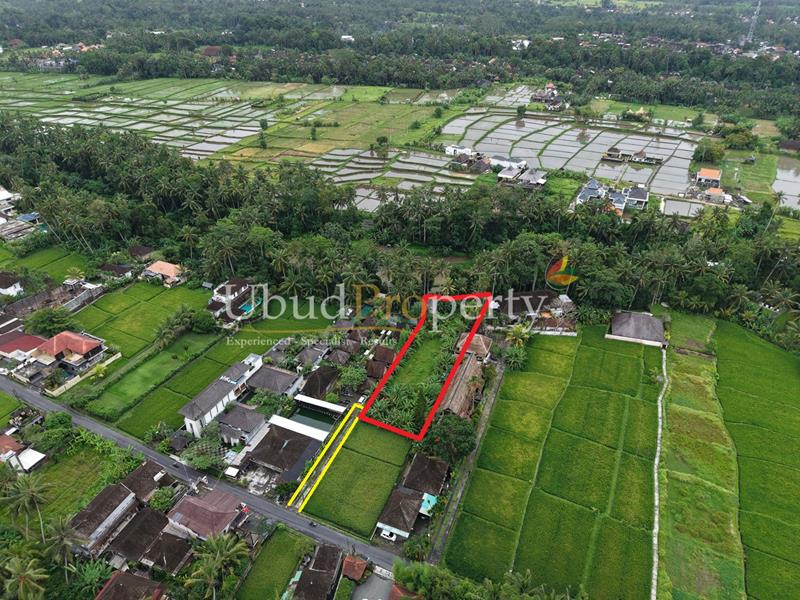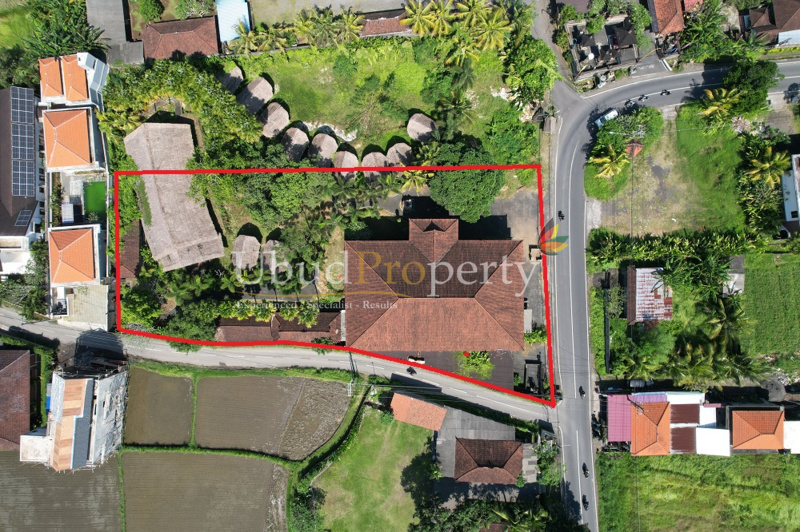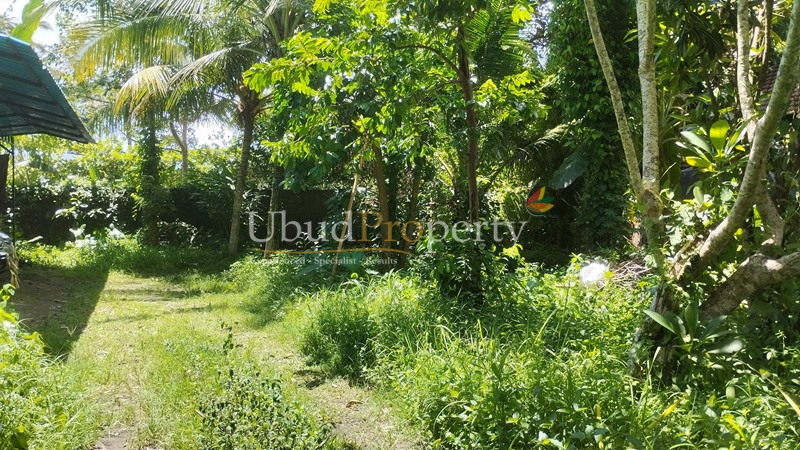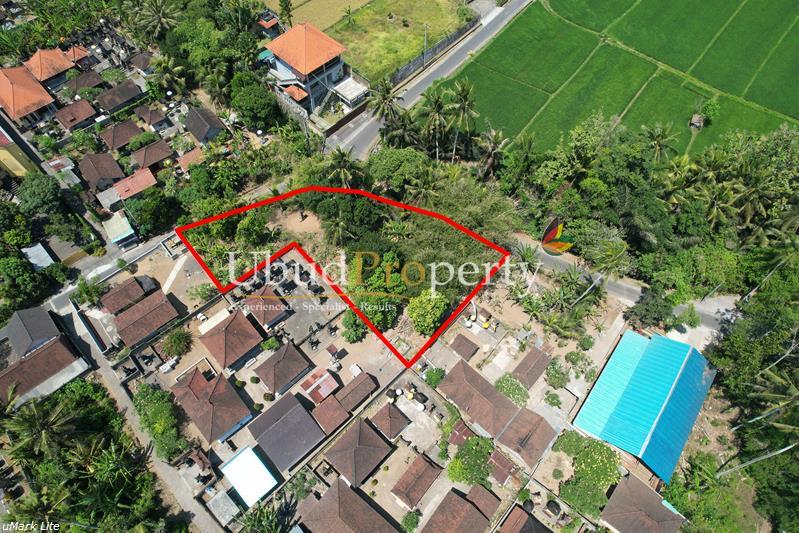Taking care of the tropical home.
22 Juni 2020
People wiser than me say ‘things change as you get older’. I would say, so far, they are right. Some of the things that we valued at 25 are not what we value at 45. Enjoying city life at 25 probably felt awesome. Maybe you went out three nights a week, eating a great meal, having a few beers with friends. No worries about your flat or home needing frequent attention.
Now change of scene:
Life in Ubud, Bali. Much good is coming your way, however, also one issue mixed in, which often is overlooked:
In the tropics the home you are living in, needs extra care and attention.
To illustrate the point -
I remember well the house in Germany in which I grew up.
The brick building was already over 70 years old when I visited there the last time in 1990. Later, when I was living in Bali and was confronted with the local building methods, I thought back to this day. I remember the amazing fact, that in this old house and after 7 decades of use by 3 generations all of the original installations were still functioning.
At the time I did not much think of it, because I was just used to that the family never had to repair anything. The toilet water supply device, looking like a WWII hand grenade, still was working well, with the noise and effect, which accompanied me throughout my childhood. Not a single door had been sagging. The brass door handles were still straight and firm. There also was no indication that electricity cables or power points had to be serviced or changed. The original old fashioned water taps were still doing their job. The copper pipes for the plumbing will probably last another 70 years…
This is unfortunatly not what we can expect from common Indonesian building practice. Homes are mostly built by several local tukangs, who will most likely never have seen the interior of a true western style house. Therefore, they have no idea of what a westerner would consider professional, or the level of workmanship that we are expecting.
An Indonesian handyman is seldom a highly trained tradesman as you would expect to find in a developed country. Most probably they have never been schooled in their trade or even used modern power tools. In most cases, their tools are basic and their knowledge is limited to problems that they have been exposed to or their friends have told them about. -
However, they often have remarkable skills, which their western counterparts are lacking.
In any case, the future home owner should take the wise step and select a reputable building Company or a recommended crew with an experienced and trusted supervisor.
Even by doing so, the local labor cost are around 2/3rd lower than overseas and we should take this into consideration before too much criticizing.
Still, one of the best stories to show what I mean was from an expat who had a chronic leak problem in his house. He tried several repairmen, but no one seemed to be able to fix it. Along came Fix-it-man number 4 who solved the problem!
The family was so relieved, until a month later when the barrel that had been placed on their ceiling to catch the leaking water crashed through into the house.
There are four constants in Bali: Sun, rain, wind, and … more sun, rain and wind!
Unlike Northern Hemisphere homes designed for freeze-thaw cycles, Bali’s eternal tropical climate therefore deals mostly with varying levels of humidity.
In addition, there is all of that amazing tropical biodiversity – think: termites, ants, beetles and countless other insects. Of course, in addition sitting on a chain of volcanoes, and on top of shifting tectonic plates makes for a great deal of seismic activity to round up the challenges.
It is little wonder that under such attack a home over time will suffer and needs to be looked after more frequently.
This short contribution to UbudProperty’s website is not in any way trying to replace any professional guide to building, or offering a comprehensive list of tips for renovating.
Take these lines just as a simple reminder that regular maintenance is needed to keep or increase the comfort and the value of the home you are living in and/or are renting out.
When building or inspecting a home to purchase here, there is one important detail which I want to bring up first.
Check out if there is proper or any insulation between foundation and the walls planned or existing. Those bulky lava stones, either from the slopes of Mount Batur/Kintamani or even Gunung Agung are thrown into the foundation channel and plenty of cement is used to then tie the stones together. They are highly hygroscopic and sucking up moisture like newspaper would. If there is no water barrier separating such foundation from the wall on top, there will be trouble.
Although I had such a barrier ordered, maybe the builder saved on the chemical and the walls still took up water. I then had drainage channels dug all around and refilled with pebbles to allow the foundations to dry out. That works reasonably well, because the water indeed runs off due to a slope nearby.
A layer of at least 5cm thickness of waterproof concrete applied onto the foundation rocks can be such an effective barrier. There are many waterproofing additives on the market. SIKA from Germany is among the leading products. Several building material suppliers in Denpasar carry the brand. There is also a Company branch in Denpasar.
Water resistant sheets can be another option. Beware of proper sealing around the rising re-enforcement steel bars.
Such water stop is often overlooked, until much later when the wall paint is peeling off in- and outside and mildew with its unhealthy effects builds up. Wooden door frames will become soft and make a nice take-away feast for termites, furniture near the wall may become moldy too, and wallpaper often starts to peel off after the first rainy season.
Another point when talking about the first steps in building -
Local plumbers use plastic pipes for pressure water, even underneath the floor slab. Often even in a lesser quality to save on their expenses. Later on, when those frequent small or occasionally larger earth tremors rattle and crack the glued joints, searching for leaks and fixing them is usually dramatic.
Insist on the use of galvanized pipe there. Properly threaded and joint. When inspecting a home for buying, try to see where the pipes enter into the foundation to evaluate their quality rating and strength.
In case the house is already finished and lived in, what can be done to maintain or restore the building, keep its value and make the place even more suited for the Bali climate?
Here just a few basic thoughts -
Surround your house with tropical plants, inside and out. The plants will not only make your space feel beautiful and refreshing, but will also cool the area and provide welcome shade.
Cross-ventilation for air flow is important. Tropical homes use breezeways, French doors and lots of windows to keep air circulating for cooler temperatures and to evaporate moisture. Be sure to have some screened air vents high under the ceiling. Screened to prevent bugs from entering your home at dusk, especially at the time of the year right after the first rains when they come out by the millions.
A small tip by the wayside: Don’t Drop the Towel. Making most out of your relaxed life can mean that wet bathing suits and towels are often dumped wet as they are. We know they eventually get picked up and dried off, but even just a day or two of damp clothes in the house can lead to mold forming, which can actually start to grow in the right conditions in as little as 24 hours.
In terms of cooling, internal blinds and the like aren’t going to tick all the boxes.
Internal blinds aren’t very effective since the sun has already passed through the glass.
External shutters or blinds do a better job and can be easily added.
From living in cooler climate we are used to feel comfortable in a room temperature of about 23 degrees C. For some reason here in Bali 27 degrees Celsius still feel quite OK.
If we give it some weeks, the body can quite easily adjust to a different environmental temperature.
Don’t forget to think of your budget.
The KwH consumption of air conditioners depends on their horsepower (HP). For example, an aircon unit with 0.5 HP will use about 600 watts, while a 2.5 HP aircon will consume approximately 2,700 watts.
You may already know – one KwH (a device using 1000 Watt for one hour) is costing you 1.364 Rp. (The rates will increase by end of June 2020)
The 1000 watt AC of about 1 hp therefore will gobble up in an 8 hour night of continuous running 13.000 Rp, which is the price of almost 2 liters of fuel at your pump station, or more importantly for your kids, equals one scoop of chocolate ice cream. Serious food for thought.
Further on the subject of AC -
Air conditioners need to be serviced regularly by a professional maintenance company. This is due to the buildup of dust, dirt and mold within the interior blower and exterior compressor. Failure to have your AC systems serviced regularly can cause the AC unit to not function properly and may endanger your family’s health, especially if you have family members with allergies due to inevitable buildups of mold and mildew. Ensure that the service includes a complete cleaning of the interior/exterior air filter, blower, and condensation coils. The service should also include a Freon level inspection. The Freon level in most units should be maintained at 70 PSI (Pressure per Square Inch).
If you are renting yourself, or renting your villa out, those expenses for AC service are usually borne by the tenant.
Next: Insulate, insulate, insulate. Stone wool pads of about 5 cm thickness can simply be laid onto your ceiling and are light enough for the hung ceiling sheets not to buckle. Surely a good roof insulation is the main key for cooling the place. The hot air up there then needs to find a way out. Have some screen protected vents in the eaves.
Should there be the need to change the roof tiles, usually after a maximum of 20 years, choose a lighter color. Or paint it - the Greeks have been doing it for centuries. Painted concrete tiles are another option and very suitable, unfortunately not matching houses in traditional Bali style.
Alang-Alang thatching is great for the tropical look and roof insulation. However, the Balinese variety grass is produced by using fertilizer, therefore grows and also deteriorates faster. Repair or replacement can become an issue after 5 years already. Alang-Alang from Lombok is said to last considerably longer.
Why are roof leaks actually such a common problem? Heavy rains, imperfect roofing products, and poor installation almost guarantee that your roof will leak. How much or how often, will vary, but almost all roofs leak. The most common roofing materials used in Indonesia are ceramic, clay or brick roof tiles. Many of these tiles are still manufactured by hand and often have small defects that cause them to not fit tightly together and allow for shifting over time with heavy winds or those earthquake tremors. Roof tiles are often not installed with proper waterproof sheeting under them (tar paper, aluminum foil, rubberized sheeting, etc.) and the rafters they sit on are usually not level, even warp after those humidity changes. It takes an experienced person to try to find a leak, because water can travel over long distances, before finally dropping down and telling you when you hope for a good night’s sleep: ’plop plop plop’ - there is a problem.
If you are having a recurring roof leak try the following:
Have the entire roof checked for visible shifted and/or broken tiles. Have the roof ridges checked for cracks and chips. These areas should be re-mortared and a waterproof coating has to be applied after. Materials could have dried out and cracked or shifted during the dry season. Make sure the water caused no structural damage to beams or rafters. Once the rotting starts, it will go on and can affect nearby healthy structures too. If the leaking is occurring from a roof joint and/or junction or due to improper sloping of a concrete roof area, then a long-term solution should be discussed with a roofing expert and proper materials be agreed on. This can be costly and certainly needs to be decided by the house owner.
If there is a wooden pool deck, sometimes after a few season it is already coming apart. Instead of temporary repairing, consider pavers instead. Embedding pavers into the earth will help reduce temperatures rather than you being elevated on an exposed wooden deck. And they will last.
Next: Re-painting the house.
In contrast to oil-based paints, acrylic paints will resist blistering, flaking or cracking, and are rugged enough to withstand not only high moisture content in the air, but rain, sand and direct sunlight.
While the ideal temperature for painting is 21 degrees with humidity around 50%, the hot weather, humidity and monsoon-style rains that frequent Bali’s atmosphere don’t allow for those kind of conditions. This does not mean that you should let your house slowly deteriorate in front of your eyes, or neglect to groom it every few years. You should still paint! Just know these things first:
Picking the right paint
The paint that you buy in Indonesia will generally be suitable for the local weather, however it is important to check that the paint you are using is a quality brand. The right paint will allow for consistent evaporation so the color will be even and flat. If it happens that moisture is slowly travelling up the walls again, usually white clouds from the underlying base coat become visible. By choosing a matching color for the new coat, like a very light sandy tone, this unsightly clouding stays longer hidden.
Check the forecast
This may sound obvious, however in tropical climates where the weather is generally consistent on a daily basis, it may not be so obvious to check the forecast for the following week before you begin painting. You do not want all of your hard work to get washed away or dirty in a down poor that happens two days after you’ve finished the job. Rains that come too soon after the paint job may also cause the paint to splash onto other items that you don’t want to match your house. If there’s even a chance of rain, don’t paint.
While you’re far away and dreaming of your Bali home… the truth of the matter is that homes standing empty are at risk. Movement in your home helps in many ways; from air flow management to maintenance, to even preventing insurance voiding your claims. Many house insurance policies have a clause that the house cannot be left empty for certain periods, otherwise claims for damage will be rejected.
Electricity: Because of faulty electric installations, quite a number of houses and businesses burn down in Indonesia, certainly more frequent than in the Country you are from.
The reason: There is no trade education. The friend of an electrician who helps out in the work and is not electrocuted within 12 month, is now regarded to be electrician.
As basic requirement for electric safety, proper earth grounding is a must. Even when using my low-amp computer, I often feel an unpleasant electric charge when plugging in or unplugging connections. I should have this checked. If you have a similar experience it must be checked. Don’t think about electric shock : ‘A good one can stand it and for the weak one there can be no mercy’. There may be kids or the elderly at risk.
If the landlord will be purchasing new appliances or air conditioners for the house, insist on energy efficient appliances, because you are the one paying the electricity bill. New appliances, as a rule, consume less electricity than old run-down appliances, so the new energy efficiency features will help you save money.
Although appliances, for example purchased in Singapore, do not need transformers (and the adapter plugs are very easy to find in Indonesia), you may want to check their power consumption rating. Singapore dwellings are wired with far more electrical capacity than Indonesian homes, so for example the same model of clothes iron will have a higher watts rating if purchased in Singapore.
Check regularly to ensure that electrical outlets are clean and not broken, and that plugs of appliances are not damaged or the cables frayed. Your household staff may not understand the serious dangers involved in faulty cords and may not inform you of any problems they discover.
When fixing an electrical problem, it is best to hire a company whose work has been recommended by other expatriates who are accustomed to international standards of workmanship and safety.
Another option is to contact a villa management service that can assist you in inspecting the house for maintenance safety concerns, as well as handle all repairs. You possibly know already that UbudProperty’s management procedures are also covering maintenance and safety.
Finally, if you want to say: “ Ray, there is so much more to be said on maintenance of tropical homes”. Yes, there sure is.
Again, this was a reminder only to not hold off with maintenance too long, and with this said, good bye for now. I really need to go and put varnish onto the gate. It’s been 8 years already and the weather is fine.
If there is something relating to maintenance or property management which you’d like to ask, call Pak Agung from the UbudProperty team ( 0361 970 888 ). If he cannot give an immediate answer, he will discuss your request with our maintenance crew and get back to you. It’s free.
Wishing you well in these strange times and
With best regards from all the team at UbudProperty,
yours Ray.
FEATURE LISTINGS
U.660

- 1,295 Sqm
Tanah 12.95 Are di Dekat Pusat Ubud – Pemandangan Sawah, Hutan, & Sungai More Detail
IDR 9.712.500.000S.195

- 2,490 Sqm
This land with building really suits a café or luxurious villa in this strategic area More Detail
IDR 9.586.500.000
